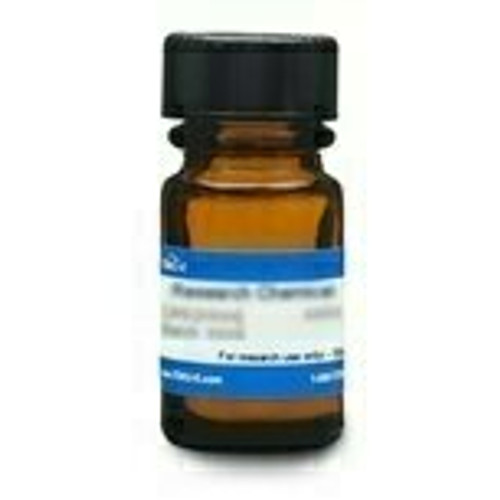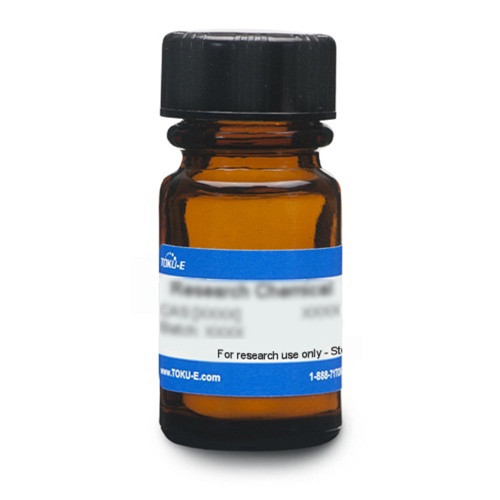Terbinafine Hydrochloride (Terbinafine HCl) belongs to the allylamine class of antifungals. It is active against fungi and yeast. It is used in studies of adsorption and stability. It is used against the dematophytic fungi. It has anti-cancer properties.
Terbinafine HCl is soluble in methanol.
| Mechanism of Action | Terbinafine inhibits squalene monooxygenase thus blocking ergosteriol biosynthesis, an essential component of fungal cell membranes. Inhibition results in squalene accumulation. It is lipophylic. The compound can also reduce the fungi's ability to generate reactive oxygen species.
This product is considered a dangerous good. Quantities above 1 g may be subject to additional shipping fees. Please contact us for details. |
| Spectrum | Terbinafine HCl is active against fungi and yeast, specifically against dermatophytes. It is fungistatic against Candida albicans. |
| Microbiology Applications | Terbinafine can suppress cell proliferation in vitro via inhibition of DNA synthesis and apoptosis activation (Ho et al, 2004). |
| Eukaryotic Cell Culture Applications | Terbinafine dose-dependently decreased cell number in cultured human umbilical vascular endothelial cells (HUVEC). It was not cytotoxic at 120 mM. studies have demonstrated that Terbinafine can inhibit angiogenesis (Ho et al, 2004). |
| Cancer Applications | Terbinafine inhibits oral squamous cell carsinoma growth in a concentration-dependent way via anti-cancer cell proliferation and anti-angiogenesis (Chien et al, 2011). |
| Molecular Formula | C21H25N · HCl |
| References |
Chien M, Lee T, Kao C, Yang S and Lee W (2011) Terbinafine inhibits oral squamous cell carcinoma growth through anti-cancer cell proliferation and anti-angiogenesis. Molec. Carcinogen. 51(5):389-399 Cosma AD, Petrux-Vancea A (2017) Studia Universitatis Babes-Bolyaibiologia LX11: 53-60 doi 10.24193 Ho PY, Liang YC, Ho YS, Chen CT, Lee WS (2004) Inhibition of human vascular endothelial cells proliferation by Terbinafine. Int J Cancer. 10;111(1):51-59 PMID 15185342 Oremusova J and Vitkova Z (2007) Adsorption, partition and release balances of Terbinafine hydrochloride, part I. Die Pharmazie volume 62(4):273-277 PMID 1748282 Ryder NS (1992) Terbinafine: Mode of action and properties of the squalene epoxidase inhibtion. Br. J. Dermatol. 126 Suppl 39:2-7 |







